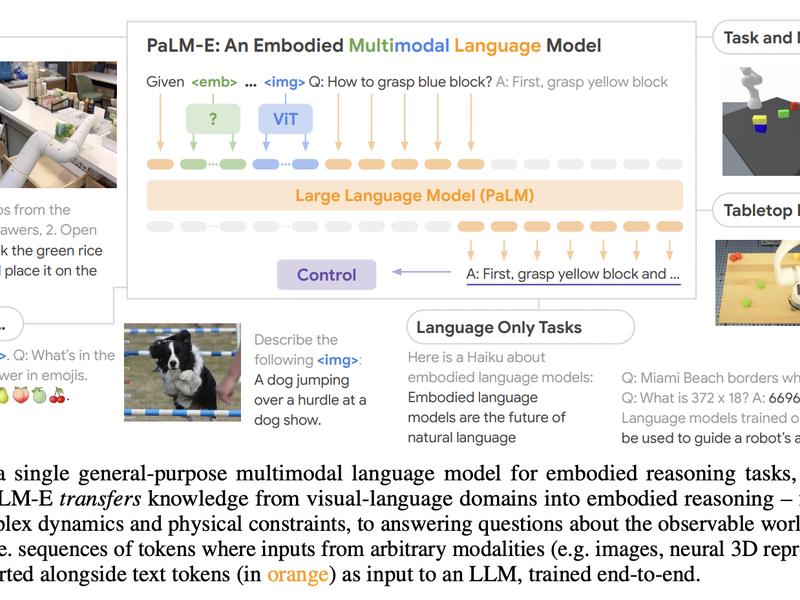Researchers from Google and TU Berlin have developed an embodied language model, PaLM-E, which directly includes continuous inputs from an embodied agent’s sensor modalities and allows the language model to draw more accurate conclusions for sequential decision-making in the actual world. PaLM-E exhibits positive transfer, where knowledge or skills from a learner’s first language can be applied to their second language learning, resulting in faster and more effective acquisition of the L2. PaLM-E is a single big embodied multimodal model that displays positive transfer and can solve a range of embodied reasoning problems from different observation modalities on numerous embodiments.

